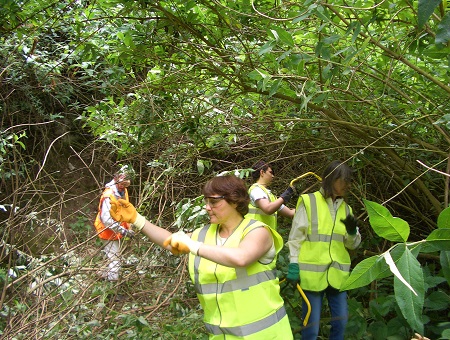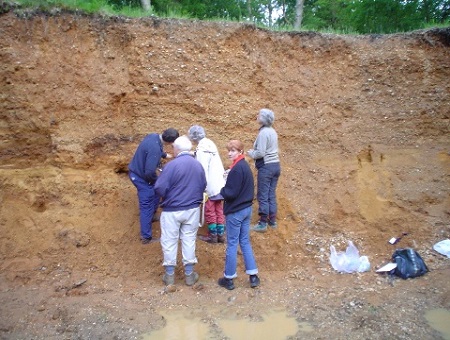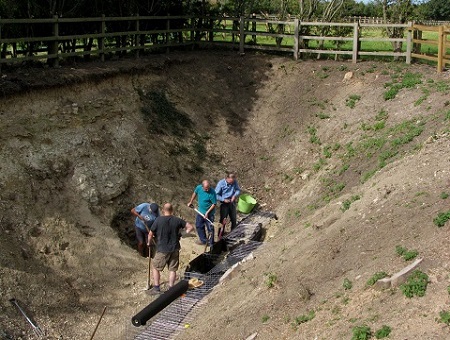|
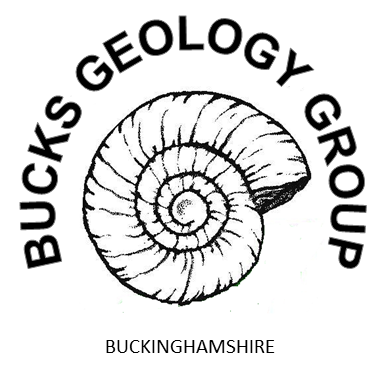
Bucks Geology Group
Geological Conservation
How can you help?
Just by joining your membership fee will add funds to aid our conservation work!
But if you want to do more then just join us on one of our work days. These are fun and not too demanding, you can do as much or as little as you like.
For instance, simply clearing the face of some ivy, brambles or other vegetation is a common activity.
You just need to be handy with a pair of secateurs.
Activities are always led by a committee member and often associated with a picnic, BBQ or cafe lunch depending on the time of year.
They are always fun plus a useful way of keeping fit. Why pay for an expensive gym membership to get a tedious form of exercise, when you can do something useful with us, and that is also enjoyable!
Why is Geological Conservation Important?
Geology is present in every aspect of our lives - from the
landscape we live on to the houses we live in. The food we eat depends on the
soils which are derived from the underlying rock. Our water resources are
controlled by geology. Where settlements, farming and industry have been
possible in the past all intimately depend on the local rocks and landscapes.
Yet when we think of 'conservation' we tend to immediately consider only the
biological side of this subject - despite the natural flora and fauna depending
on their geological environment! In short, the variety of geology underpins the
variety of life - the immense richness of our ecosystems is derived from rocks,
soils and climate (past and present).
Just like the more commonly used term 'biodiversity' is used
to describe our heritage of plants and animals, the term 'geodiversity' is used
to describe the very rich heritage of rocks, fossils, minerals and natural
processes that have developed our landscape and soils.
Every county in Britain is unique in its geological resource
and its historical use of that resource. Even within any individual county the
geology can change dramatically in a very short distance. Consider Bucks with
its younger southern end of Tertiary age spanning 130 million years through the
Cretaceous to the Liassic beds of the Jurassic rocks in the north, with a good
helping of Quaternary (Ice Age) deposits spread over the top - like icing on a
cake.
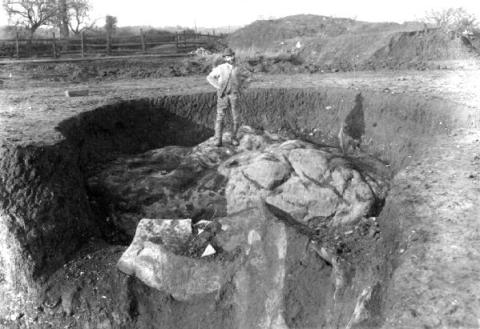
Denner Hill stone (a type of sarsen stone) being quarried
in 1905. This stone has no in situ outcrop today - geologists would love to see
this rock in place, as it will shed light on the age and stratigraphic
relations. (Photograph from the Bucks County Museum archives.)
But are rocks and landscapes at risk? For many people it is
hard to imagine that rocks that have been present for millions of years are in
danger of disappearing. However, there are a significant number of threats to
both rocks and landscapes - from natural and man-made pressures. The recent loss
of geological sites in Bucks has reached crisis point largely through landfill,
major construction work (roads and buildings) and the re-landscaping which is
geologically insensitive.
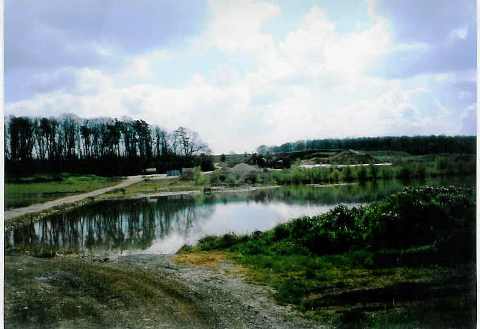
Gayhurst Quarry near Newport Pagnell. This is all that was
left of the glacial sands and gravels in 1999. No exposures exist today.
The Bucks Geology Group aims to both enjoy and to help
conserve and record the County's geology. It does this under the Local Geological Sites (LGS) scheme and
recently also undertook a trial in recording and giving a value to sites under
the LGAP audit (LGAP stands for Local Geodiversity Action Plan - see the links above for more information on these).
|

